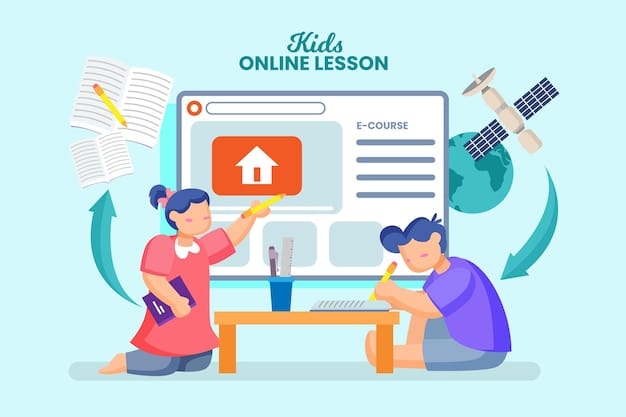Points to Consider When Doing Online Homeschooling
Points to Consider When Doing Online Homeschooling
Choosing online homeschooling isn’t just an educational decision—it’s a complete shift from public school in your children's education, your family’s lifestyle, and your daily rhythm. For many homeschooling families, it’s about custom pacing, quality curriculum, and tailored teacher support. But it’s also a serious commitment, with responsibilities ranging from curriculum options to managing schedules and ensuring a valid high school diploma. Parents must also consider the pros and cons of online homeschooling when making this decision.
With the rise in popularity of online homeschooling programs, families now have access to a broader range of learning tools, making home education more structured and effective than ever before. This flexibility allows parents to take an active role in their child’s development, offering rich and diverse learning experiences not often available in traditional classrooms. Moreover, it encourages a more hands-on and values-driven educational environment. Families can also benefit greatly from practical online homeschooling tips to make the experience more rewarding and manageable.

If you’re curious about online schooling as a homeschool alternative or switching from public school, this blog is your friendly guide to navigating online learning, preparing students for success, and selecting the right online homeschool program. Whether you’re considering full-time online school or supplementing with individual courses, understanding the bigger picture helps make the transition smoother. Let’s explore how homeschool programs can transform your child’s learning experience and support your educational goals effectively. With the right mindset, resources, and guidance, the shift to homeschooling can become a rewarding and enriching journey for the whole family.
Have You Been Considering Homeschooling for Your Kids?

Have you been dreaming of a learning journey where your child can learn at their own pace, explore individual courses like language arts or science, and benefit from more individualized attention than a traditional classroom allows? For many homeschool families, online education at home offers that freedom, especially in certain subjects . This type of education is especially useful for students who may need a break from rigid academic structures and prefer more personalized learning pathways. Families can explore a wide range of online homeschool programs tailored to different learning styles and academic goals. These options cater to visual, auditory, and kinesthetic learners, ensuring your child stays engaged and challenged without feeling overwhelmed or left behind. With the help of a virtual homeschooling guide, this transition can be both structured and empowering.
But before you dive in, ask yourself:
Why choose online homeschooling programs over private school or public school?
Can you stick to a structured approach?
Do you value educational experience tailored to the whole child?
Are you ready to manage your family's schedule alongside live classes, learning materials, and teaching materials?

The Beginning Could Be Overwhelming
Launching into online schooling often feels chaotic. You’re comparing homeschool curriculum, hunting for resources, and juggling your family’s schedule.
Everything feels new
Do you start with grade K–12 core subjects or jump to elective courses?
Should you choose a private school option or a totally online public accredited homeschool program?
Are you comfortable using learning materials like PDFs or interactive platforms?

Expect to tweak as you go
Combine a structured approach (like scheduled language arts blocks) with flexible live classes or field trips.
Explore extracurricular activities: art, music, coding clubs—whatever excites your child.
Choose curriculum options that align with your teaching style, whether hands-on or digital.
Homeschooling Is Hard Work

Let’s be clear: homeschooling, even online, isn’t the easy route. It calls for constant attention to planning, your child’s pacing, and adapting lessons. Maintaining a consistent lesson schedule helps keep your child on track, ensuring that students learn effectively specially in grades K–12. Balance core subjects like science and math with electives that bring joy. Parents should also set academic goals each term and review them regularly to ensure consistent improvement and readiness for college or higher education. A planner or digital calendar can help map it all out. Don't forget to evaluate outcomes through regular quizzes and informal assessments to see how well the learning sticks. Effective remote learning strategies can support long-term success. These online homeschooling tips can make a real difference when navigating the pros and cons of online homeschooling while providing strong online education at home.
Use online platforms that let students learn interactively and track progress.
Integrate certified teachers through live or recorded sessions for guidance.
If your child is earning college credit, ensure assignments and tests are timed properly.
Homeschool families must juggle being teachers and caregivers.
You’ll need to manage teaching materials, grade-level adjustments, and sometimes teacher support.
Offer individualized attention in core lessons (like math or language arts) while letting your child explore elective courses in art, coding, or music.

Freedom
One of the biggest perks of online homeschooling programs is the freedom it offers—freedom in curriculum, pace, and lifestyle.
Your child can skip ahead in science, revisit math concepts daily, or spend weeks mastering language arts. Online platforms and accredited homeschool programs support this flexibility.
Want a private school level of quality but with online convenience for your online high school education ? Look into online homeschool programs backed by qualified teachers.
For high school students, good programs include:
Courses that align with traditional high school or even college credit.
Support for college applications and transcript services.
Plan field trips tied to geography or history.
Use cooking to explore measurements and chemistry.

Have kids keep scrapbooks or portfolios for reflection—real learning happens outside screens too!
Check Local Laws
Before embarking on online homeschooling, check your local regulations. Requirements vary widely by place and affect your choices of online school or homeschool programs.
What to look for:

Registration: Do you need to notify authorities?
Curriculum coverage: Is a specific set of courses required each year?
Testing or portfolio submissions: Many states require this annually.
Credentials: Certain areas require oversight by certified teachers.
When enrolling in online homeschooling programs, choose accredited homeschool programs recognized by your region or associations like Western Association (WASC) or Cognia for U.S. students.
Trust Your Children
Online homeschooling thrives when you trust your kids to learn and explore.
Let students pick topics—building websites? Go for it!

Offer two or three individual courses, like math or science electives.
Allow flexible days, especially if they’re working on a major school project or self-driven learning venture.
Use live classes for discussion, teaching materials for projects, or qualified teachers for coaching, and also explore various resources . Some homeschooling families pair up for joint learning or group projects.
Watch Out for Common Homeschooling Issues

Every method, including online homeschooling, has its challenges. Common pitfalls include excessive online learning, digital distractions, and feelings of isolation due to the absence of a traditional classroom environment. Whether you're using an online homeschool program or a full-fledged online school, balancing screen time is essential. Many homeschooling families find that a poorly managed structured approach can either overwhelm or under-stimulate students, especially when the schedule doesn’t align with the family’s lifestyle or family’s schedule.
Issues like too much screen time, tech overload, or an inflexible curriculum may affect how students learn. Homeschool families using online homeschooling programs sometimes struggle to manage the balance between real-world application and digital delivery. Online courses and live classes can be highly engaging but need to be broken up with hands-on activities using tangible teaching materials and offline learning materials to offer a comprehensive educational experience.
Smart solutions include:
Using timers during online classes and scheduling regular breaks.
Designing distraction-free workspaces, which is especially helpful in large families or shared spaces.
Encouraging enrollment in local or virtual co-ops to reduce isolation.
Leveraging teacher support for feedback and structure.
To combat screen fatigue and enhance learning , many parents implement blue-light filters and rotate screen-heavy days with active field trips or nature walks. Blending core homeschool curriculum with elective courses, such as art or music, keeps engagement high. Online homeschool resources also allow parents to customize curriculum options across grades K–12, helping every child's education stay dynamic.
Incorporating extracurricular activities, science experiments, and hands-on projects ensures that students benefit from a balance of digital and practical learning. Ultimately, being proactive with resources and learning tools helps ensure online education is enriching, not exhausting. With guidance from certified teachers, strong support from other families, and a reliable structured approach, these issues are manageable.
When handled well, online homeschooling offers a transformative path—especially for high school students working toward a high school diploma, college credit, or advanced college applications in their student's education . It’s all about creating a flexible, engaging environment where the whole child is supported and students are truly preparing students for real-life success.
Other Minor but Significant Things
Let’s zoom into the little things that make a big difference in a child’s home education journey. These may seem minor, but they shape confidence, motivation, and long-term success in online homeschool settings. Creating and maintaining e-portfolios, for instance, helps students learn how to document achievements. These can include project completions, reflections, and grades in core areas like language arts, science, and elective courses.
For students in online high school, keeping digital records of progress becomes vital for college applications and earning a high school diploma. With the right homeschool curriculum and consistent assessments from certified teachers, families can ensure their students are on track with the expected grade level standards. Using various curriculum options, including individual courses, also adds depth and personalization.
Small yet powerful practices include:
Regular walks or yoga during school hours.
Scheduled outdoor play for physical development.
Weekly family reading circles that explore different courses, stories, or learning materials.
Another helpful detail? Monthly “family field trips,” where parents and kids collaborate to plan educational outings. These trips can align with their online homeschool program themes—visiting a science museum during a biology unit, or touring a local farm to complement science topics. Such experiences create memories and tie learning to real-world applications, enhancing the value of online education at home.
What’s also crucial is that many parents connect with homeschooling support groups or tap into larger communities. Whether through the Western Association or local meetups, building relationships with other families ensures shared resources, emotional support, and shared planning. These networks offer insight into navigating higher education, choosing the right private school partnerships, or supplementing with public school extracurriculars. Parents often share remote learning strategies for parents and exchange effective online homeschooling tips to improve outcomes.
In the end, it's the blending of structure and spontaneity that enriches the life of a homeschooled child. When parents, teachers, and students collaborate, when online education is enriched by real-world engagement, and when love for learning is prioritized—homeschooling becomes a truly transformative experience.
Online Homeschooling – FAQs
1. Is homeschooling the right choice for every child?
Not always. While online homeschooling can be a powerful educational alternative, it doesn’t fit every learning style. Some high school students benefit most from the structure and peer interaction that a public school or private school provides. These students may find it hard to stay motivated without a structured classroom or daily real time instruction. Others, however, thrive in online homeschool programs that let them work at their own pace, using a structured approach that matches their strengths.
Many homeschooling families choose accredited homeschool programs for the flexibility they offer. These programs provide quality curriculum, certified teachers, and teacher support through live classes and digital platforms.
Ultimately, many parents are exploring homeschooling as a viable homeschool alternative to traditional education. Whether it’s for health reasons, flexibility, or dissatisfaction with a local public school, the right homeschool curriculum paired with an online homeschool setup can make a big difference in a child's success. However, parents must assess if this model suits their child’s temperament and whether it aligns with the family’s schedule and allows for their own pace in overall child's education goals. Understanding the pros and cons of online homeschooling is essential before making the switch.
2. What subtle habits can improve long-term success?
Success in online homeschooling doesn't just come from great online courses or expert certified teachers—it’s built on small daily habits that help students stay on track. A consistent morning routine, where students wake up and prepare for online classes just as they would in a traditional school, sets the tone. Pair this with weekly planning sessions and reviews to track progress, adjust goals, and reflect on students’ learning experience.
Themed days like “Science Tuesdays” or “Language Arts Thursdays” introduce novelty and structure, keeping high school students engaged. These routines are particularly effective in online learning environments, where students can easily drift without clear guidance. Organized schedules anchored in daily objectives help in preparing students for academic and real-life challenges.
Another key habit is integrating both core and elective courses. From individual courses in science and language arts to creative writing and digital art, mixing subjects keeps things fresh. With online homeschool programs, learners can also benefit from a mix of live classes and self-paced lessons, which ensures better absorption of material. These habits build autonomy, time management, and accountability—crucial skills for both higher education and adult life, allowing students to learn at their own pace .
Finally, consistent engagement with teachers, peers, and other families can significantly boost performance. Whether it's via extracurricular activities, college applications prep, or virtual meet-ups, these connections add human touch to digital learning and contribute to holistic home education development for parents and students alike .
3. What are the advantages of shaping your own curriculum and pace?
The flexibility to design your own homeschool curriculum is one of the biggest draws of online homeschooling programs. Students can dive deep into science, spend extra time mastering math concepts, or explore history through a personalized lens. Unlike rigid systems in public schools, a customized online homeschool program allows children to excel at their own pace.
Many accredited online homeschooling programs offer a wide selection of curriculum options, from language arts and social studies to robotics and entrepreneurship. This allows students to tailor their path and even prepare early for college applications. With access to online courses, students can also pursue individual courses in higher education or earn college credit, making them college-ready while still in grades K–12.
Another significant advantage is the integration of elective courses and other extracurricular activities. Children can explore music, art, or coding through online classes taught by certified teachers. Because these programs align with a family’s schedule, parents have more control over what, when, and how their children learn. This ensures the curriculum fits the family’s lifestyle, addressing individual passions and career goals.

This learner-driven approach supports the whole child—academic development, emotional well-being, and practical life skills. It’s not just about passing exams; it’s about building a lifelong love for education, fostering creativity, and ensuring every student has a meaningful educational experience.
4. Can online homeschooling still offer social development?
Absolutely. While critics often argue that online homeschooling lacks social opportunities, the truth is that many homeschooling families actively build social connections in diverse ways. Through extracurricular activities, live classes, virtual clubs, or local meet-ups, students form friendships and learn teamwork. Whether it’s coding clubs, chess tournaments, or online drama productions, today’s online school environment is rich with interaction.
Most accredited homeschool programs encourage students to join co-ops and group projects. Many even facilitate real time instruction in small groups to encourage collaboration. These activities mirror the social components of public school, helping children build confidence, communication skills, and a sense of community. Some students also take online courses through platforms that emphasize peer discussion and group learning.
Many homeschool families also enroll their children in other extracurricular activities outside the digital classroom—like sports, music, or martial arts. These activities help with physical development, time management, and interpersonal growth. Social skills aren't exclusive to classroom settings; they can be cultivated in local libraries, church groups, field trips, or family-led community projects.
In fact, many parents and other families have found that online homeschooling programs allow for more quality interactions than traditional schools. With flexible schedules and focused lesson time, families can prioritize both academic and social goals. Whether it's volunteering, traveling, or attending local cultural events, homeschooled students often benefit from a broader, more balanced social life.
With planning and effort, home education can foster well-rounded, socially confident individuals ready for higher education, career paths, and life beyond school. The key is variety—combining online learning with real-world experiences to ensure holistic development.
5. What obstacles can disrupt success?
While online homeschooling offers great flexibility, it isn’t without challenges. One major obstacle is burnout—both for parents managing daily lessons and for students who may feel isolated or overwhelmed. Another issue is inconsistent scheduling, which can throw off academic progress. Without a clear plan, students may fall behind or lose motivation, especially when juggling multiple online classes or trying to meet grade level standards without proper guidance.
Screen fatigue is another growing concern. With so much reliance on online learning, children may spend too many hours on devices, reducing time for hands-on exploration. Additionally, not all homeschool programs are created equal. Some lack teacher support, use outdated curriculum, or don’t meet standards required for college applications or transferable college credit. That’s why enrolling in accredited homeschool programs with certified teachers is crucial. They provide not just instruction but also feedback, assessments, and a clear path toward a high school diploma.
Another issue is finding the right curriculum options. With so many available, it’s easy for families to feel overwhelmed. From individual courses to complete packages, the choices can be daunting. That's why consulting with advisors, using reliable resources, and choosing programs aligned with your family’s lifestyle is so important.
Yet, every obstacle is solvable. Burnout can be managed with scheduled breaks, creative lessons, and shared responsibilities among parents.